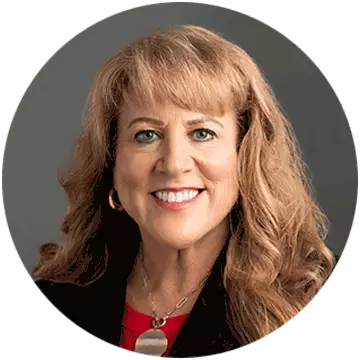How to become a K-12 teacher

Written by Elizabeth Exline

Reviewed by Pamela M. Roggeman, EdD, Dean, College of Education

When it comes to childhood aspirations, many students may seek to follow in their teacher’s footsteps and enter the teaching profession. In fact, plenty of teachers will attest that going into the profession is more of a calling than a choice.
What's required to start a career as a K-12 teacher?
What exactly is required to become a K-12 teacher? Is a teaching degree required? What about a master’s in education or a doctorate? What about certificates and certifications?
The fact is, teachers don’t always need a teaching degree. That’s good news for those who arrive late to the proverbial classroom party and decide mid-career (or even mid-degree) that they were actually meant to teach. Here’s what aspiring teachers need to know when it comes to building a career as a K-12 teacher.
The nonprofit, nonpartisan Learning Policy Institute cites several surveys that underscore what the evening news has long reported: Schools are grappling with a serious teacher shortage. Crippling as such shortages may be, they’re good for spotlighting real concerns that demand remediation.
All of which is to say that the field is undergoing a veritable reckoning with opportunities to discover (or rediscover) a passion for educating.
What are alternative pathways to become a public school K-12 teacher
The requirements to become a public school K-12 teacher vary according to state. Some states require aspiring teachers to take the Praxis test. Some, like Virginia and Kentucky, have their own, state-specific Praxis exams. Others, like Michigan and Arizona, don’t require candidates to take the Praxis exam to earn licensure.
Every state, however, mandates that public school teachers have a bachelor’s degree, even if it’s not a teaching degree, per se. The traditional pathway to becoming a teacher is to earn a bachelor’s degree, successfully complete a teacher education program, some of which are state-approved, successfully complete a certification or licensure exam, such as the Praxis test.
Not in the plan? Not to worry. Here are some other pathways to the head of a classroom as a K-12 teacher.
1. Obtain a teaching certification
Teachers must have a teaching certification or license in the state where they wish to work. This is essentially proof that they have fulfilled the requirements laid out by the state in which they plan to teach.
Those with a bachelor’s degree in something other than education, a teacher education program can help get up to speed on the skills necessary for licensure.
For licensed teachers who wish to enhance their skills and knowledge in a specific area, such as education leadership or special education, an education certificate can be a good next step.
2. Work at a private school
While the K-12 teacher space has some flexibility with regard to teacher credentialing requirements, charter and private schools have even more latitude. This is partly because these schools are set up differently.
Like public schools, charter schools are publicly funded, tuition-free schools, although they don’t always receive the same amount of funding as public schools. Furthermore, they operate according to individual agreements (aka “charters”) with state or local governments, which outline things like operational rules and performance standards. As a result, some charter schools don’t require all teachers to hold a state license or certification.
Private schools, meanwhile, can choose not to receive any government funding, which frees them from restrictions pertaining to curriculum, admissions and, yes, teacher certification. Teaching requirements are up to the state in which the teacher is practicing, but private schools may elect not to apply to be state chartered, meaning they’re not required to have teachers with licenses teach in their schools.
Of course, that freedom can work the other way too. Some private schools require that teachers not only be certified but also hold a postgraduate degree, such as a master’s degree or doctorate.
Charter and private schools, depending on their focus, may prefer their teachers to be subject matter experts rather than in possession of a general teaching certificate. The highly performing BASIS Charter School system is one example of this approach. Its teachers hold bachelor’s degrees or higher, but teacher certification isn’t required.
3. Start as a substitute
Whether looking to get the lay of the land regarding a teaching career or just get a foot in the door, substitute teaching can be a good first step.
As with teaching degree and certification requirements, each state dictates substitute teaching requirements. Some states, such as Kansas and Oregon, have eased requirements in response to teacher shortages. Generally speaking, however, substitute teachers:
- Must pass a background check
- Must possess at least a GED or high school diploma
- May need to have a bachelor’s degree and certification
Keep in mind that work as a substitute teacher is unpredictable, and there are no guarantees of a full-time position, even if working as a long-term substitute.
4. Get an emergency teaching certificate
Widespread disruptions and displacements in the educational sphere have forced school districts to get creative when it comes to putting teachers in classrooms. In addition to loosening requirements for substitute teachers, these measures include issuing emergency teaching certificates.
Available through certain school districts across the country, these certificates allow candidates to teach for the duration of a school year. Again, the criteria for an emergency teaching certificate vary among states, although a bachelor’s degree and a skills assessment are generally required.
Reasons to get a degree in education to become a K-12 teacher
While it's possible to find yourself as a K-12 teacher in a classroom with a degree in a different subject, sometimes it’s a good idea to get the teaching degree anyway.
For starters, a Bachelor of Science in Education gives candidates a framework for effective teaching and the proper foundation to pass licensure exams. It also positions teachers to enhance their careers down the road. With a bachelor’s, they can pursue an advanced degree, such as a Master of Arts in Education or a Doctor of Education, along with such specializations as an online master's in education administration or curriculum development.
Contact University of Phoenix for more information.

ABOUT THE AUTHOR
Elizabeth Exline has been telling stories ever since she won a writing contest in third grade. She's covered design and architecture, travel, lifestyle content and a host of other topics for national, regional, local and brand publications. Additionally, she's worked in content development for Marriott International and manuscript development for a variety of authors.

ABOUT THE REVIEWER
As dean of the University of Phoenix College of Education, Pamela Roggeman has spent over a decade in higher education teacher preparation in both the public and private sector. Her experience has included national partnerships that help to advance thought leadership in the field of education. Dr. Roggeman also serves as the President of the Arizona Educational Foundation’s Board of Directors.
This article has been vetted by University of Phoenix's editorial advisory committee.
Read more about our editorial process.


